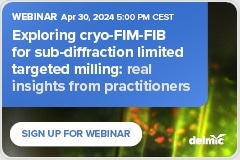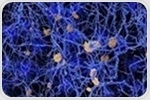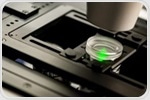| Fluorescence - Exploring the Effect of Ring Closing on Fluorescence of Supramolecular Polymers |
|
|
|
|
| |

|
|
| |
The latest fluorescence news from NewsMedical |
|
|
|
 | | |
 Exploring cryo-FM-FIB for sub-diffraction limited targeted milling Exploring cryo-FM-FIB for sub-diffraction limited targeted milling
Discover the future of research in integrated fluorescence microscopy and focused ion beam milling (cryo-FM-FIB)! Learn from experts as they unveil insights and groundbreaking work in fluorescence-guided cryoFIB, cryoET, or CLEM. Sign up now for the webinar showcasing precision targeting techniques and the power of integrated FIB/SEM microscopy.
| |
|
|
|
|
 | | |  Many neurodegenerative diseases, including Alzheimer's and Parkinson's, are difficult to diagnose before symptoms begin to appear. Many neurodegenerative diseases, including Alzheimer's and Parkinson's, are difficult to diagnose before symptoms begin to appear. | | | | |  Fluorescence microscopy is a workhouse technique in the life sciences for tissue analysis, cell structure visualization, and the study of biological processes and interactions. Fluorescence microscopy is a workhouse technique in the life sciences for tissue analysis, cell structure visualization, and the study of biological processes and interactions. | | | | |  Recently, a group of scientists created a fluorescent nanosensor that requires no batteries using single-wall carbon nanotubes and an inactive version of the enzyme glucose oxidase (GOx). Recently, a group of scientists created a fluorescent nanosensor that requires no batteries using single-wall carbon nanotubes and an inactive version of the enzyme glucose oxidase (GOx). | | | | |  In collaboration with Prof. Quanming Wang’s team at Tsinghua University (THU), the research team led by Prof. Meng Zhou from the University of Science and Technology of China (USTC) of the Chinese Academy of Sciences (CAS) attained near-unity room-temperature photoluminescence quantum yield (PLQY) (>99%) in the near-infrared (NIR) emission of metal nanoclusters in solution. Science published their study. In collaboration with Prof. Quanming Wang’s team at Tsinghua University (THU), the research team led by Prof. Meng Zhou from the University of Science and Technology of China (USTC) of the Chinese Academy of Sciences (CAS) attained near-unity room-temperature photoluminescence quantum yield (PLQY) (>99%) in the near-infrared (NIR) emission of metal nanoclusters in solution. Science published their study. | | | | |  A new technique for creating carbonized polymer nanodots that can emit multicolored, ultra-long Room-temperature phosphorescent (RTP) from blue to green has recently been developed. A new technique for creating carbonized polymer nanodots that can emit multicolored, ultra-long Room-temperature phosphorescent (RTP) from blue to green has recently been developed. | | | | |  A group of researchers from Leibniz University Hannover (Germany) and the University of Strathclyde in Glasgow (United Kingdom) have challenged a preconceived notion regarding the role of multiphoton components in the interference effects of parametric single photons (generated in non-linear crystals) and thermal fields, such as sunlight. A group of researchers from Leibniz University Hannover (Germany) and the University of Strathclyde in Glasgow (United Kingdom) have challenged a preconceived notion regarding the role of multiphoton components in the interference effects of parametric single photons (generated in non-linear crystals) and thermal fields, such as sunlight. | |
|
|
|
|
 | | | How would you rate today's newsletter?
| |
|
|
|
|
|